We’re very excited to be welcoming back our business guests, but we know returning to the workplace post-Covid will come with mixed emotions.
Whether working in an office or out and about on site, as professionals return to the workplace there is an air of trepidation around how we will all adjust to the new normal. We surveyed over 1,000 workers, both in the UK and Germany, to find out how they’re feeling about returning to work, and found that there is plenty of concern even around the first hurdle – greeting people face to face!
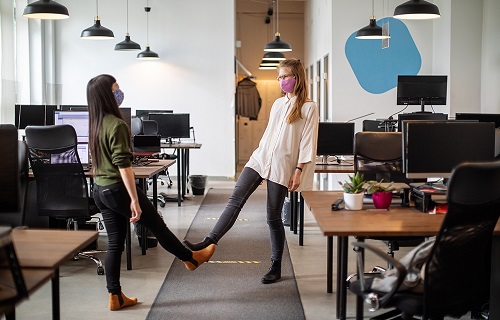

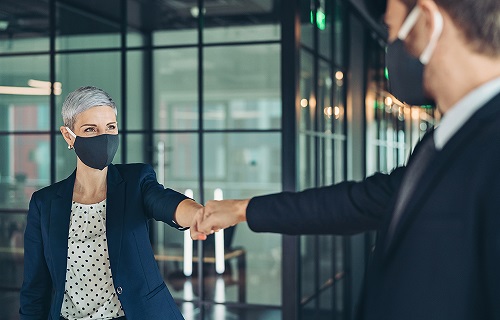

Why is greeting people at work awkward?
Our survey found that even before the pandemic, 68% of professional workers said they felt awkward about how to greet a colleague, associate or client. Over half of the respondents (54%) admitted that they had even made a faux-pas when greeting someone in the workplace. It’s a familiar situation that lots of us can relate to; you go for a handshake and the other person goes for a hug, or vice versa, unfortunately, business greetings are prone to going wrong.
Our survey found that before the Covid pandemic, our preferred professional greeting was a handshake (36%) followed by a wave or nod (both 12%). Only 9% of us preferred hugs, and only 2% of us liked a kiss on the cheek as a professional greeting.
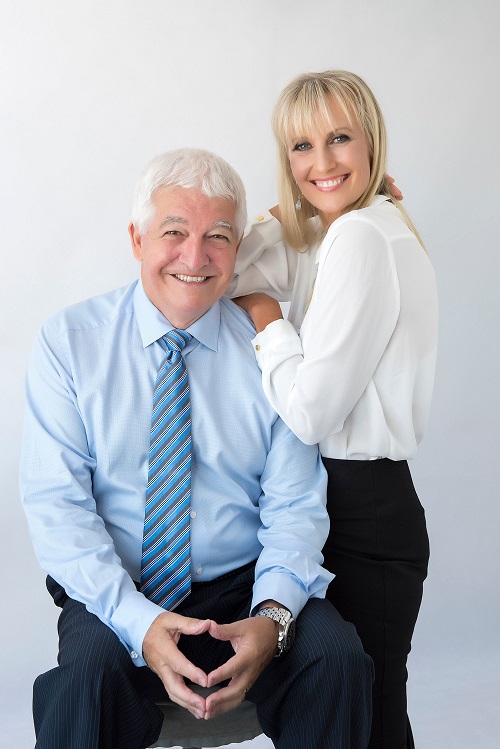
We asked a body language expert who specialises in human communication, Allan Pease, why face-to-face greetings in the workplace can feel so socially awkward:
“The reason people have reported an awkwardness when greeting people face to face in the workplace is because our most preferred gesture, handshaking, is highly nuanced. Handshaking is a very old gesture that has been passed down through generations in Western culture, originating in ancient Rome as a signal that you were unarmed, and thus conveying trust, respect and equality. Before the pandemic, handshaking had become widely accepted as the ‘normal’ business and social greeting in the West, but handshakes can actually cause social discomfort in up to three different ways:
- Invading personal space
- Physical touch
- Hand squeezing - which can be used to indicate a level of aggressiveness or weakness
With handshaking causing potential discomfort to people, we’ve evolved different greetings over time, and the variety of options available can lead to confusion.
As we emerge from the Covid-19 pandemic, we may find people are even more apprehensive about handshaking due to the spread of germs, and could reject the concept completely. However, changing our body gestures, especially something as established as the ancient handshake, isn’t something that comes naturally. There will be a conflict in people as they greet each other face to face once again, weighing up the old way of doing things versus protecting their personal space."

A new way to say hello
Since Covid, our survey found that 30% of people report feeling even less comfortable about greeting people in the workplace and 57% of respondents said they are worried business associates will get too close during face-to-face greetings. Allan comments that “The research suggests Covid has given those who previously felt awkward about the handshake a real reason to reject it altogether. This leaves the handshake with a questionable future. So far, proposed alternatives have included:
· The Elbow-Bump: This is physically awkward and actually breaches physical distancing rules. Conversely, we are also being told to sneeze and cough into our elbows – and then encouraged to offer it to others. It’s not a gesture that many of us has taken seriously.
· The Fist-Bump: A macho gesture that still involves the transfer of germs.
· Foot Tapping: An inelegant and unpractical move.
· Hand-Waving: At close range, it may be misinterpreted as ‘stay away’.”
Our survey of professionals showed that post-pandemic, there was a tie between a wave, a nod or a handshake (all 18%) as the most preferred ways for us to greet people in the workplace – proving this rejection of a handshake, but conflict of not knowing what else to do. Elbow taps or fist bumps are preferred by 16% of respondents and hugs dropped from 9% to 5% of people’s preferred work greeting, but cheek kisses remain the same (still on 2%).
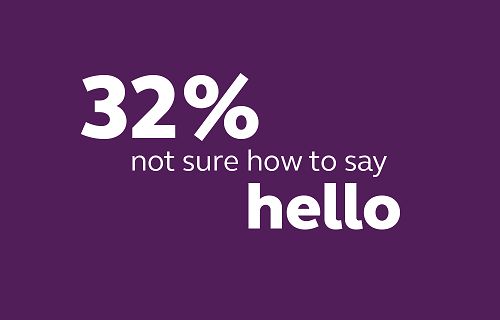
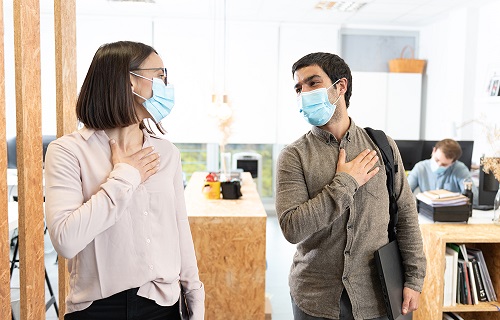
With 32% of respondents saying that they are not sure of clear guidelines on greeting people in the workplace, it’s clear that a new long-term greeting solution is needed. We asked Allan, as a human communications expert, what his thoughts were on a new way to say hello at work:
My suggestion for a new Covid-friendly professional greeting would be the ‘Heart-Hello’.
Variations on this type of greeting have appeared everywhere throughout history, thanks to it being very simple and achieving several things – it makes the other person feel welcome and accepted, it maintains physical distancing and it’s disease-free. It also allows you to read the other person’s body language signals, which is difficult in an up-close handshake.
To use this greeting gesture, do the following:
1. Place your hand over your heart
2. Smile (with your teeth visible*) and lean forward slightly
3. Maintain eye contact with the person you’re greeting
*If wearing a mask, still smile widely as it will show in your eyes and other face signals. The lean forward and eye contact part of the gesture is more important if wearing a mask.
Smiling with your teeth displayed conveys non-aggression and is intuitively understood by the brain’s limbic system as non-threatening. Leaning slightly forward avoids you being perceived as dominant or aggressive. Maintaining eye-contact allows you to remain connected to someone while not appearing to be submissive.
The Heart-Hello gesture perfectly substitutes for the traditional handshake and can bond you to others instantly, possibly even more effectively than a handshake – it’s sincere, warm and germ-free. You will not be perceived as being weak or submissive and it allows you to still read the other person’s body language. It will give you the confidence you need in meeting new people and will remove the fear, uncertainty and awkwardness most people currently feel.
See the video demonstration here: https://youtu.be/2BzMl5wB9TU
If a stranger reaches to shake your hand, simply perform the Heart-Hello and say, “Let’s avoid Covid!” and laugh. This avoids uncertainty and embarrassment. Explain why you are greeting them this way – you’ll discover that most people are usually intrigued, grateful for your explanation and it creates a relaxed environment.
About Allan Pease
Allan & Barbara Pease are the world’s most successful human communication authors, writing 18 Top 10 bestsellers including 11 number ones. Their books are translated into 56 languages and have sold over 30 million copies. Allan is Honorary Professor at three international universities and has lectured at Harvard Business School. The Definitive Book of Body Language (Barbara & Allan Pease) explains the history of the handshake and its application in making people feel relaxed and welcomed. Pre-register for the Body Language Mastery online course with Allan Pease at: www.peaseinternational.com/online-learning/